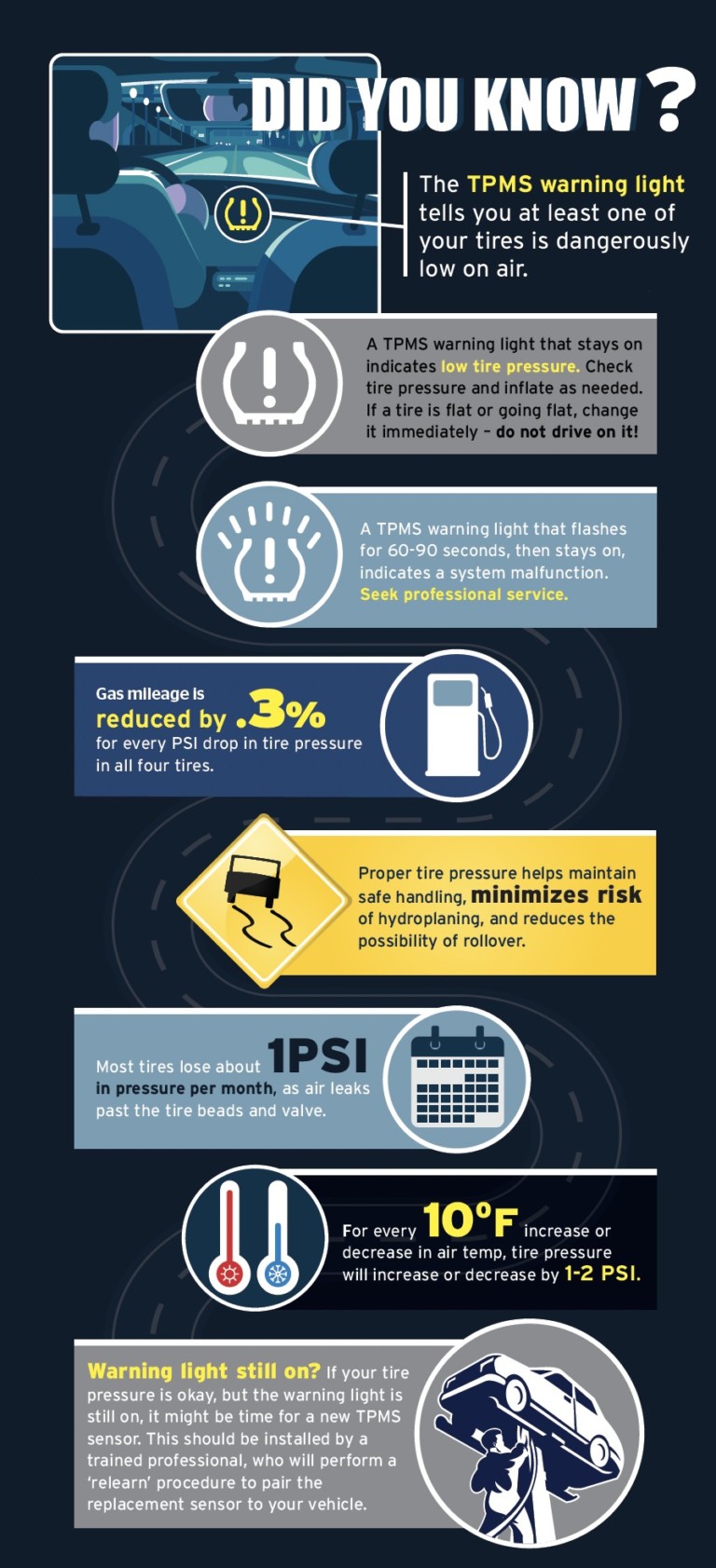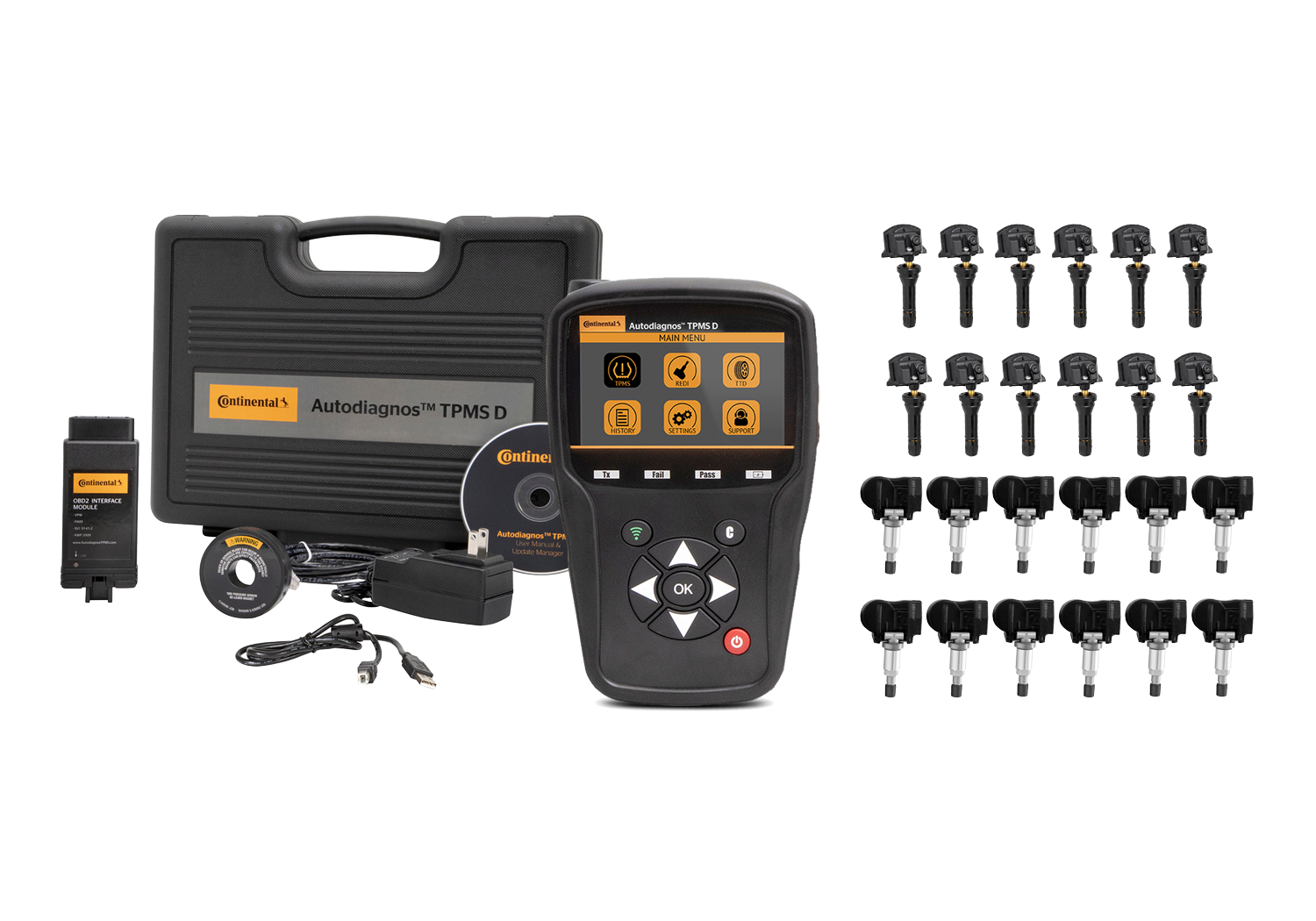Our TPMS infographic covers many of the facts that every driver should know about tires, TPMS, and driving safety. While it could one day help save your life, many drivers are not even sure what their TPMS warning light looks. Our infographic explains how to read the TPMS warning light, what you need to know about maintaining proper tire pressure, and more!
- Gas mileage reduced is by .3% for every PSI drop in tire pressure in all four tires.
- Most tires lose about 1PSI in pressure per month, as air leaks past the tire beads and valve.
- For every 10ºF increase or decrease in air temp, tire pressure will increase or decrease by 1-2 PSI.
- Proper tire pressure helps maintain safe handling, minimizes risk of hydroplaning, and reduces the possibility of rollover.
- A TPMS warning light that stays on indicates low tire pressure. Check tire pressure and inflate if needed. If a tire is flat or going flat, change it immediately - do not drive on it!
- A TPMS warning light that flashes for 60-90 seconds, then stays on indicates a system malfunction. Seek professional service.
- A TPMS relearn is the procedure that pairs the individual sensors to the vehicle. This should be performed by trained professionals.

